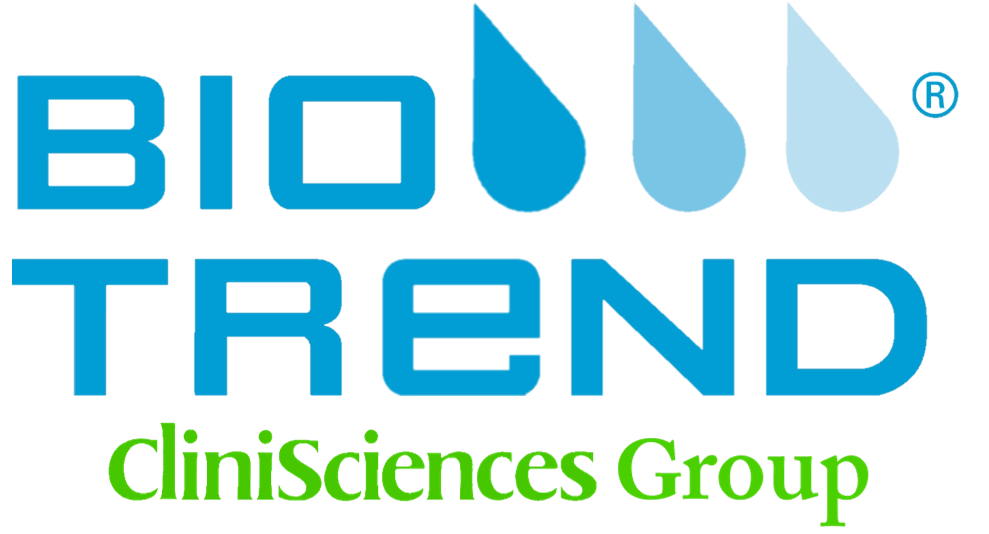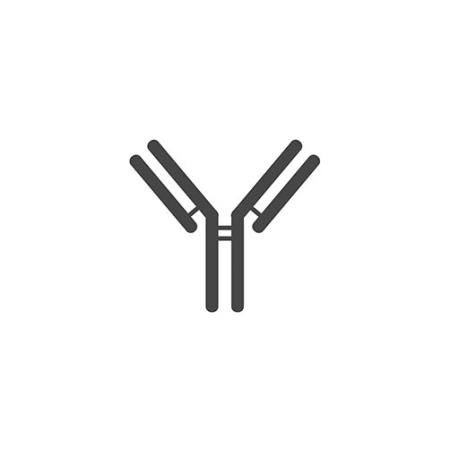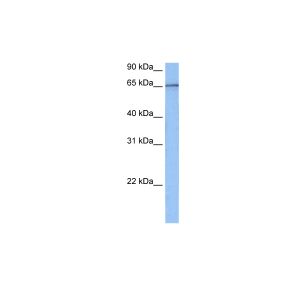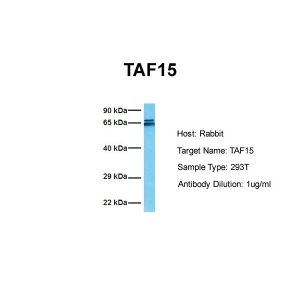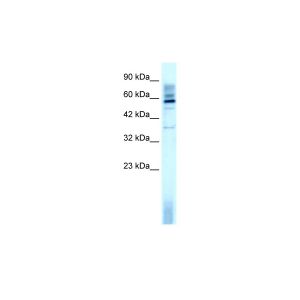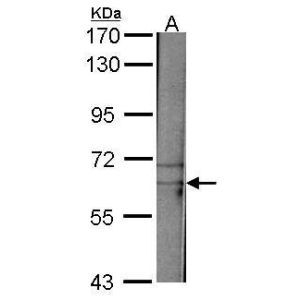TAF15 Antibody - N-terminal region : HRP
Cat# ARP30112_P050-HRP
Size : 100ul
Brand : Aviva Systems Biology
| Datasheets/Manuals | Printable datasheet for anti-TAF15 (ARP30112_P050-HRP) antibody |
|---|
| Publications | Ko, S. Y., Lengyel, E. & Naora, H. The Müllerian HOXA10 gene promotes growth of ovarian surface epithelial cells by stimulating epithelial-stromal interactions. Mol. Cell. Endocrinol. 317, 112-9 (2010). WB, Rabbit, Rat, Guinea pig, Human, Bovine, Dog, Mouse, Yeast 20048082 |
|---|---|
| Clonality | Polyclonal |
| Host | Rabbit |
| Conjugation | HRP: Horseradish Peroxidase |
| Application | IHC, WB |
| Reconstitution and Storage | All conjugated antibodies should be stored in light-protected vials or covered with a light protecting material (i.e. aluminum foil). Conjugated antibodies are stable for at least 12 months at 4C. If longer storage is desired (24 months), conjugates may be diluted with up to 50% glycerol and stored at -20C to -80C. Freezing and thawing conjugated antibodies will compromise enzyme activity as well as antibody binding. |
| Immunogen | The immunogen is a synthetic peptide directed towards the N terminal region of human TAF15 |
| Purification | Affinity Purified |
| Predicted Homology Based on Immunogen Sequence | Cow: 93%; Dog: 93%; Guinea Pig: 100%; Human: 100%; Mouse: 93%; Rabbit: 100%; Rat: 100%; Yeast: 77% |
| Peptide Sequence | Synthetic peptide located within the following region: TDSSYGQNYSGYSSYGQSQSGYSQSYGGYENQKQSSYSQQPYNNQGQQQN |
| Concentration | 0.5 mg/ml |
| Blocking Peptide | For anti-TAF15 (ARP30112_P050-HRP) antibody is Catalog # AAP30112 (Previous Catalog # AAPH00288) |
| Sample Type Confirmation | TAF15 is supported by BioGPS gene expression data to be expressed in Daudi |
| Reference | Lee, H.J., et al., (2004) FEBS Lett. 564 (1-2), 188-198 |
|---|---|
| Gene Symbol | TAF15 |
| Gene Full Name | TAF15 RNA polymerase II, TATA box binding protein (TBP)-associated factor, 68kDa |
| Alias Symbols | Npl3, RBP56, TAF2N, TAFII68 |
| NCBI Gene Id | 8148 |
| Protein Name | TATA-binding protein-associated factor 2N |
| Description of Target | Initiation of transcription by RNA polymerase II requires the activities of more than 70 polypeptides. The protein that coordinates these activities is transcription factor IID (TFIID), which binds to the core promoter to position the polymerase properly, serves as the scaffold for assembly of the remainder of the transcription complex, and acts as a channel for regulatory signals. TFIID is composed of the TATA-binding protein (TBP) and a group of evolutionarily conserved proteins known as TBP-associated factors or TAFs. TAFs may participate in basal transcription, serve as coactivators, function in promoter recognition or modify general transcription factors (GTFs) to facilitate complex assembly and transcription initiation. Its gene encodes a subunit of TFIID present in a subset of TFIID complexes. Translocations involving chromosome 17 and chromosome 9, where the gene for the nuclear receptor CSMF is located, result in a gene fusion product that is an RNA binding protein associated with a subset of extraskeletal myxoid chondrosarcomas.Initiation of transcription by RNA polymerase II requires the activities of more than 70 polypeptides. The protein that coordinates these activities is transcription factor IID (TFIID), which binds to the core promoter to position the polymerase properly, serves as the scaffold for assembly of the remainder of the transcription complex, and acts as a channel for regulatory signals. TFIID is composed of the TATA-binding protein (TBP) and a group of evolutionarily conserved proteins known as TBP-associated factors or TAFs. TAFs may participate in basal transcription, serve as coactivators, function in promoter recognition or modify general transcription factors (GTFs) to facilitate complex assembly and transcription initiation. This gene encodes a subunit of TFIID present in a subset of TFIID complexes. Translocations involving chromosome 17 and chromosome 9, where the gene for the nuclear receptor CSMF is located, result in a gene fusion product that is an RNA binding protein associated with a subset of extraskeletal myxoid chondrosarcomas. Two transcripts encoding different isoforms have been identified. |
| Uniprot ID | Q92804-2 |
| Protein Accession # | NP_631961 |
| Nucleotide Accession # | NM_139215 |
| Protein Size (# AA) | 592 |
| Molecular Weight | 61kDa |
| Protein Interactions | RPA3; RPA2; RPA1; SUZ12; RNF2; EZH2; BMI1; EED; UBD; PRMT8; MED26; UBC; FUS; TPR; TPM2; DDB1; SCARB2; RNF168; TMED9; SAP30BP; NEDD8; CAND1; DCUN1D1; COPS5; COPS6; CUL1; CUL2; CUL3; CUL4A; CUL4B; CUL5; YWHAZ; SIRT7; HIST2H4A; HIST1H3A; HIST2H2AC; CACNA1A; |
